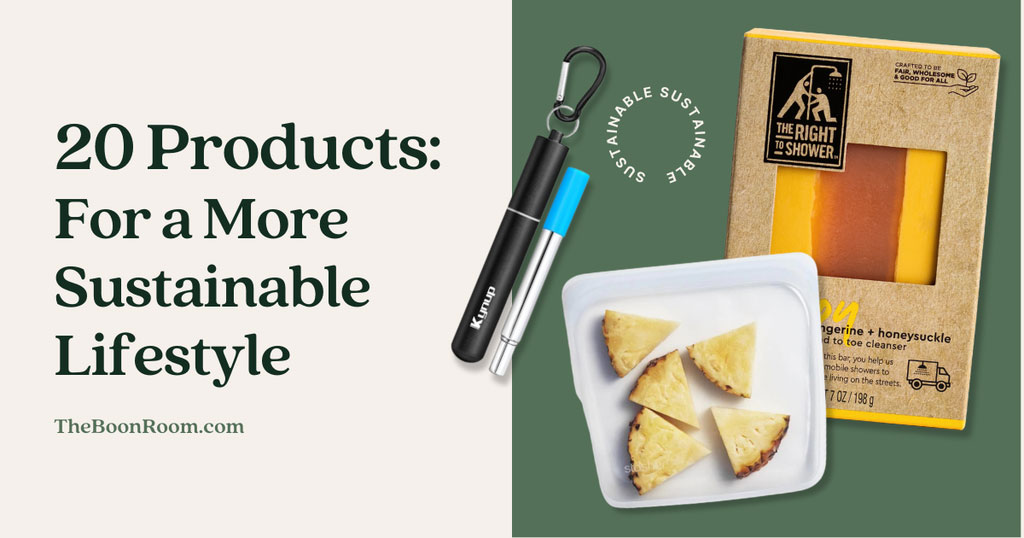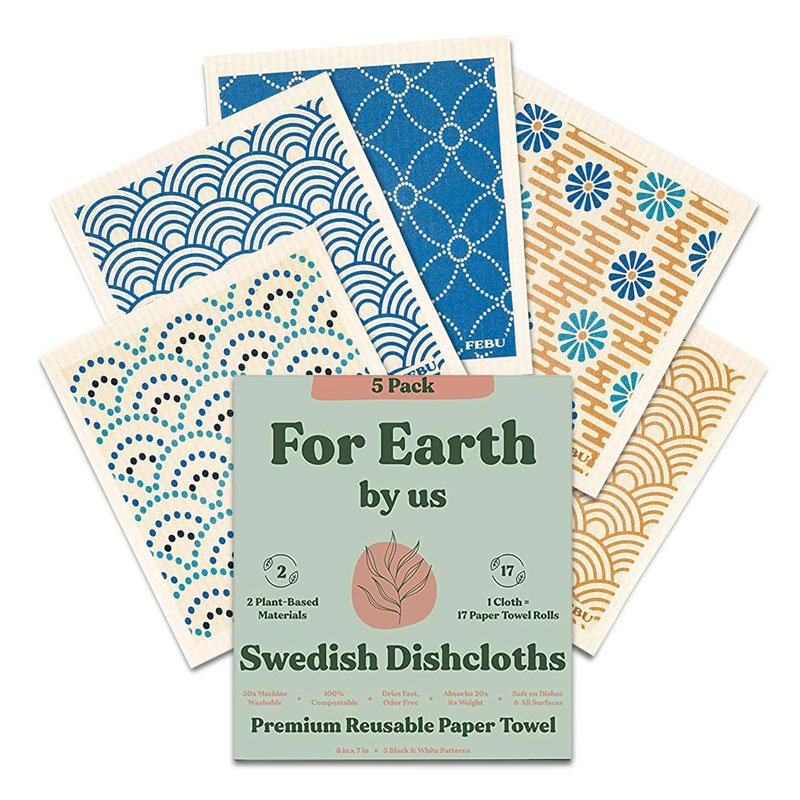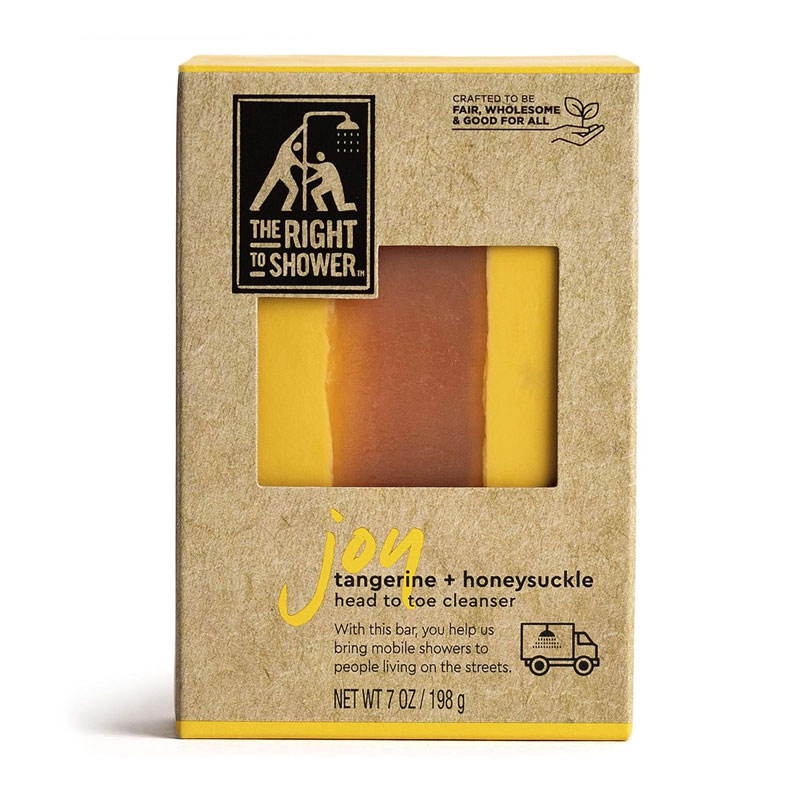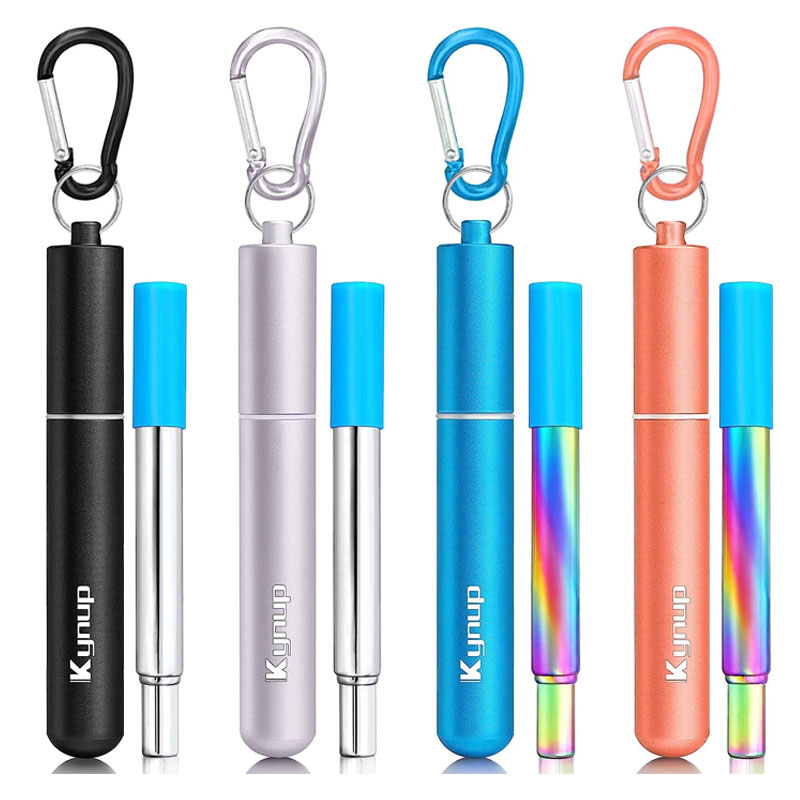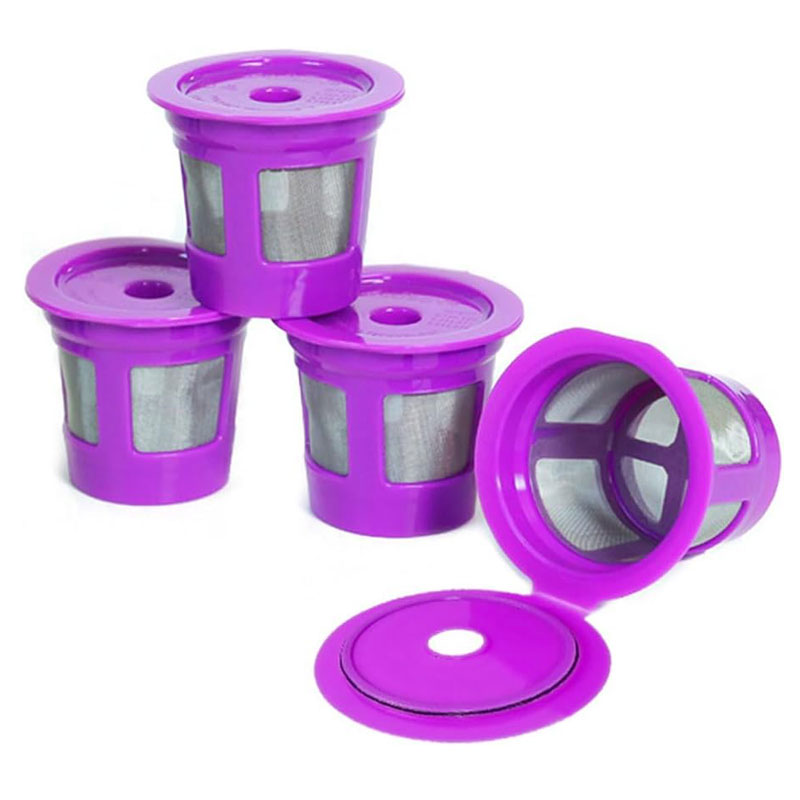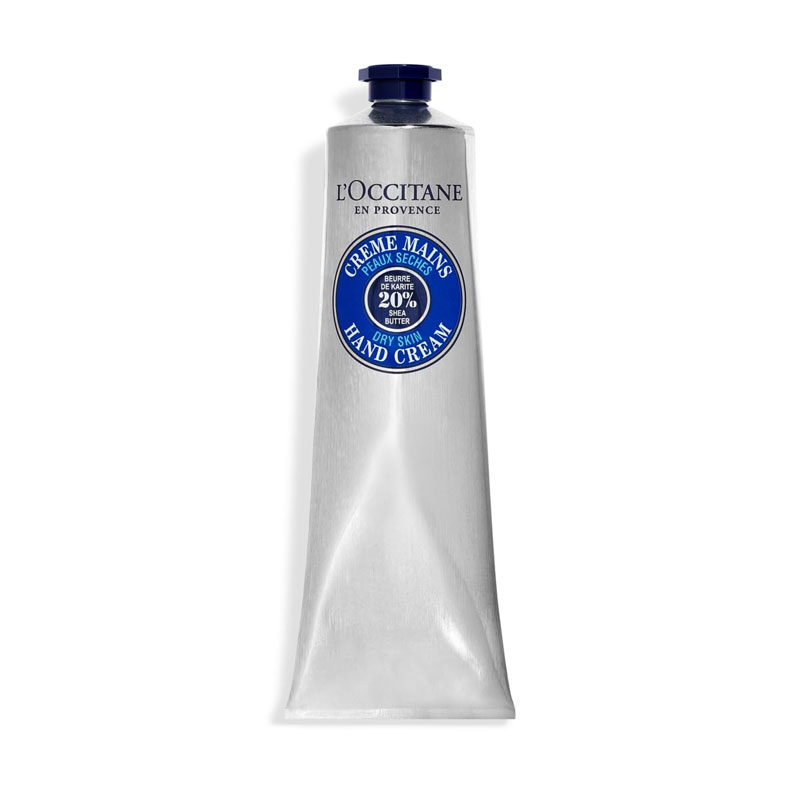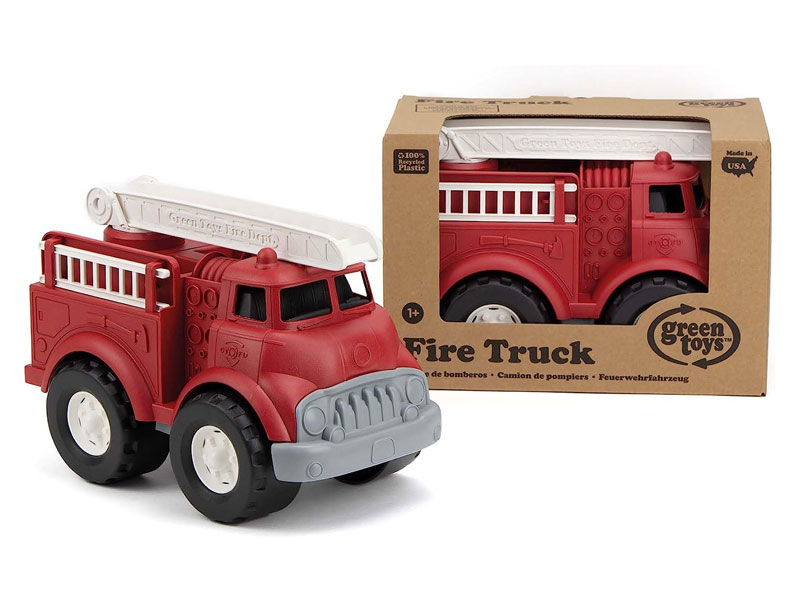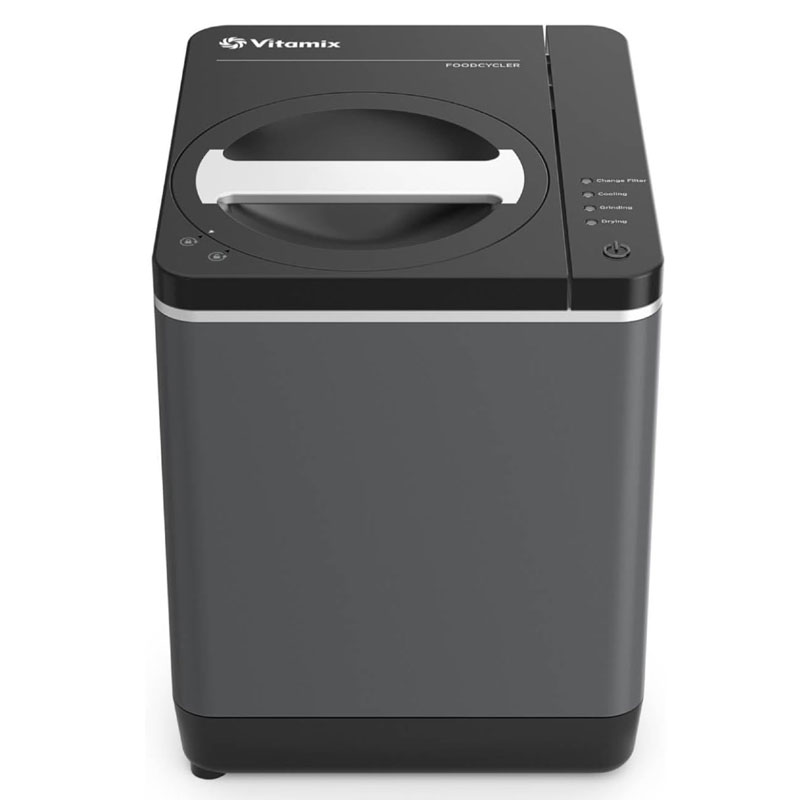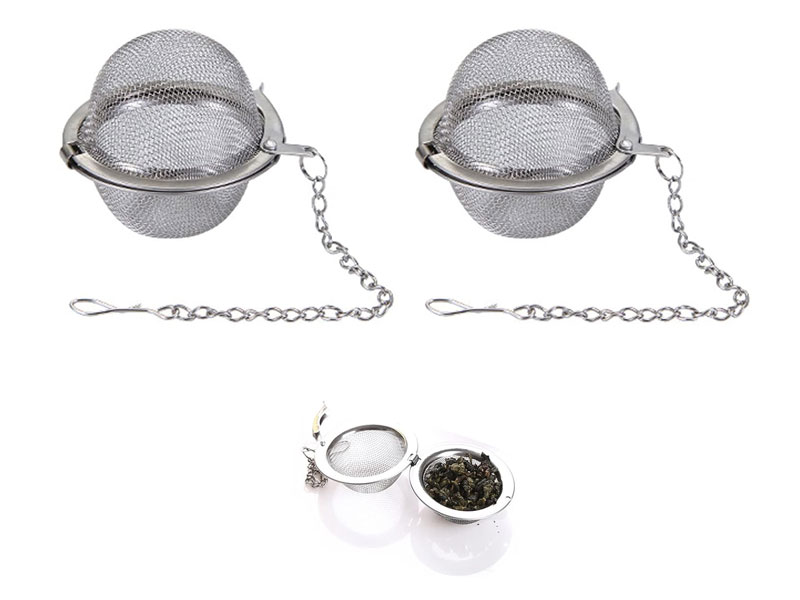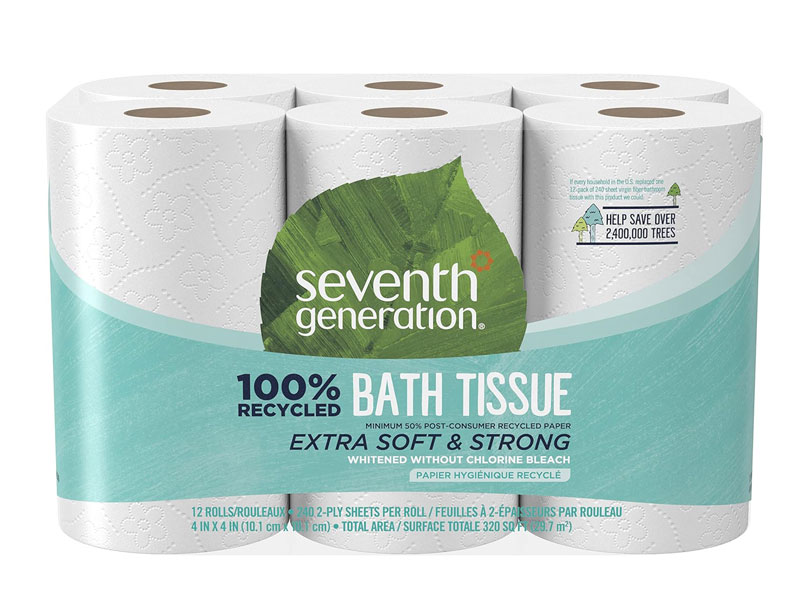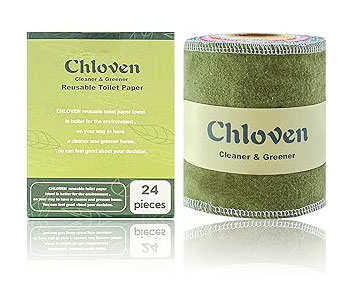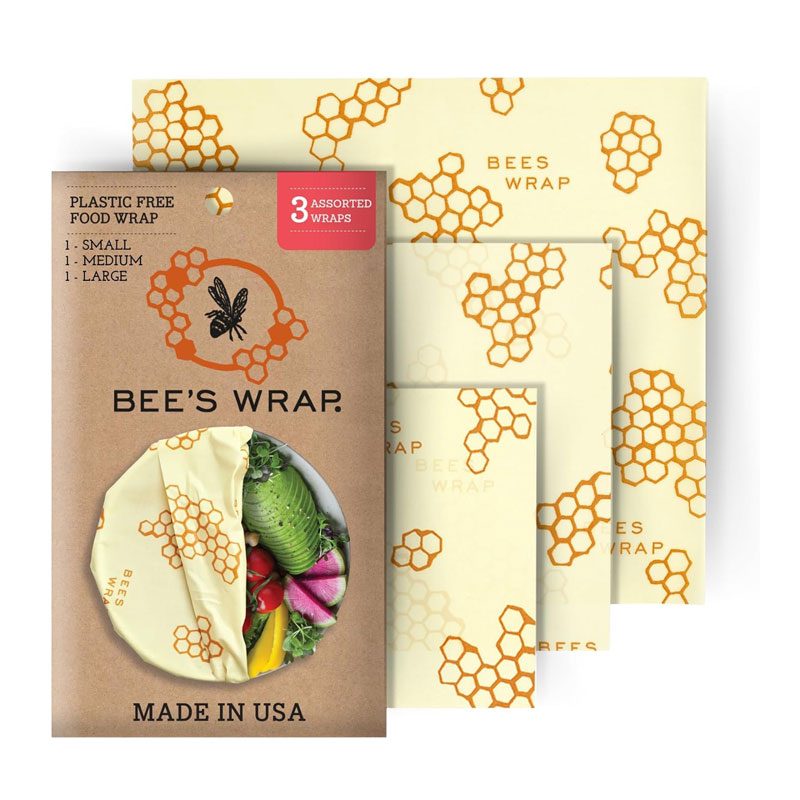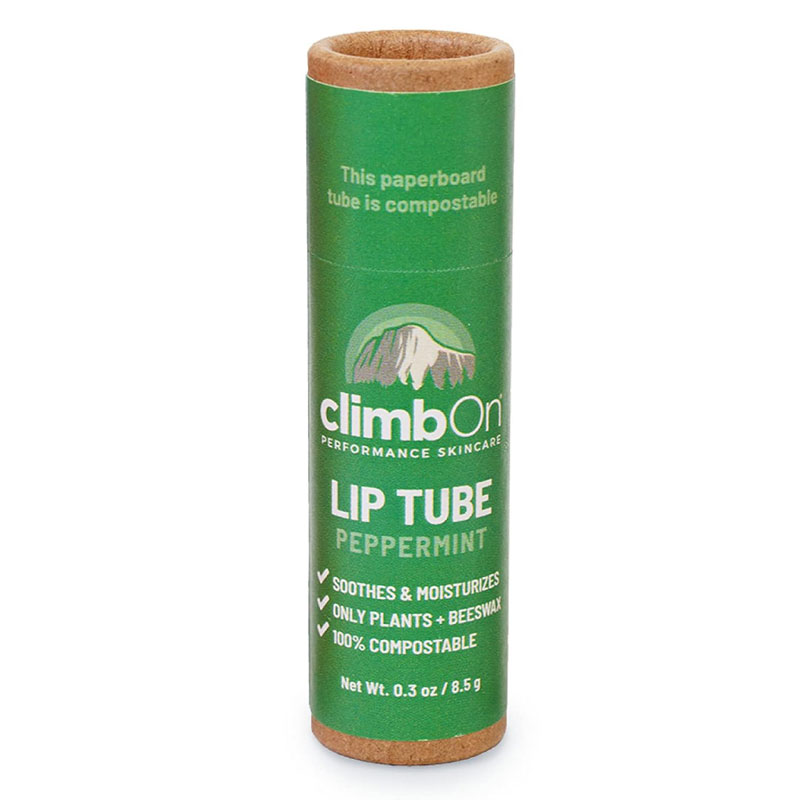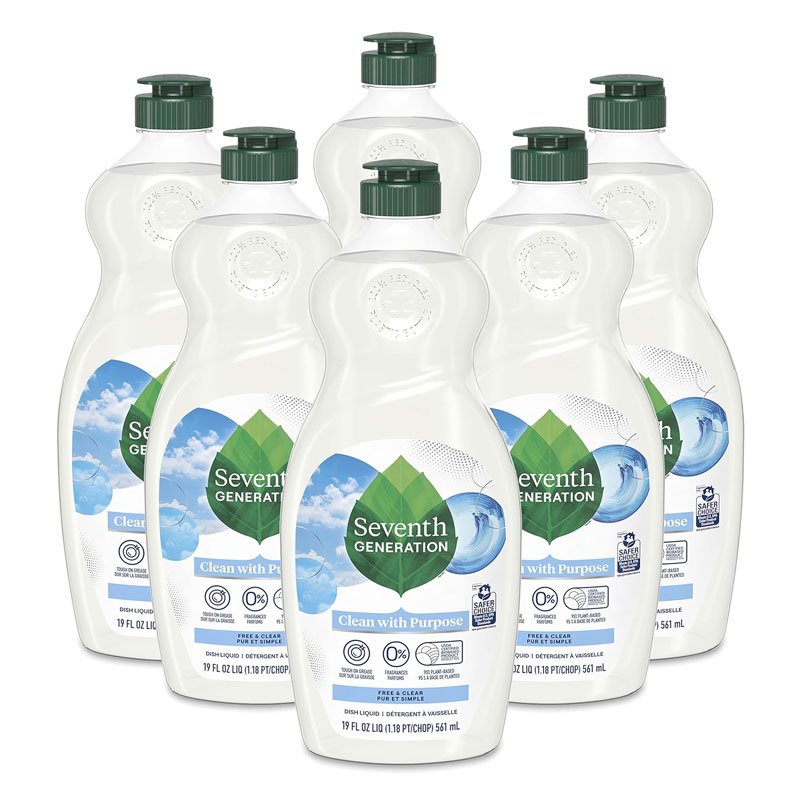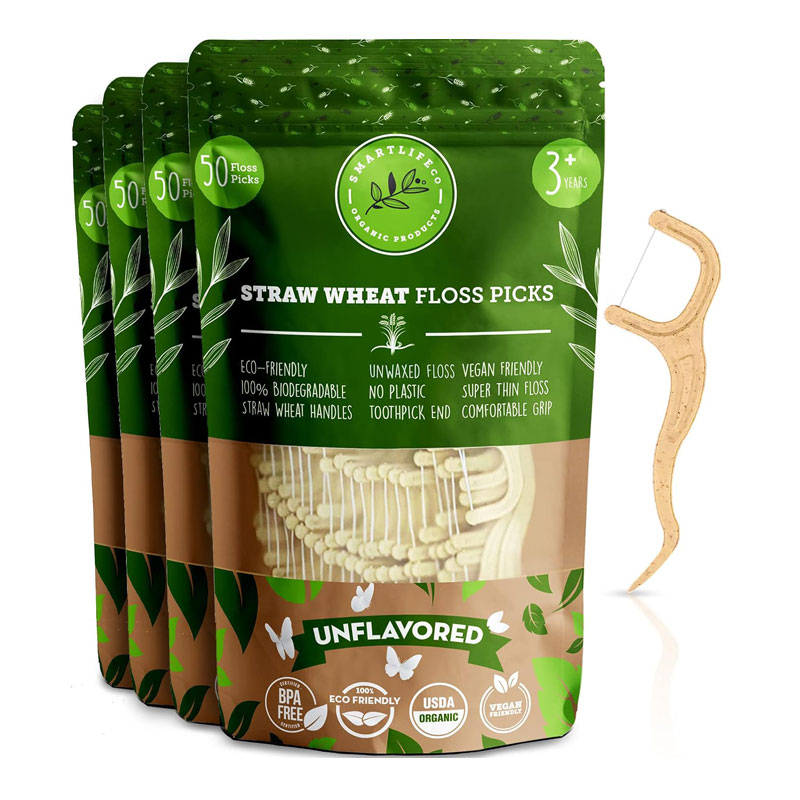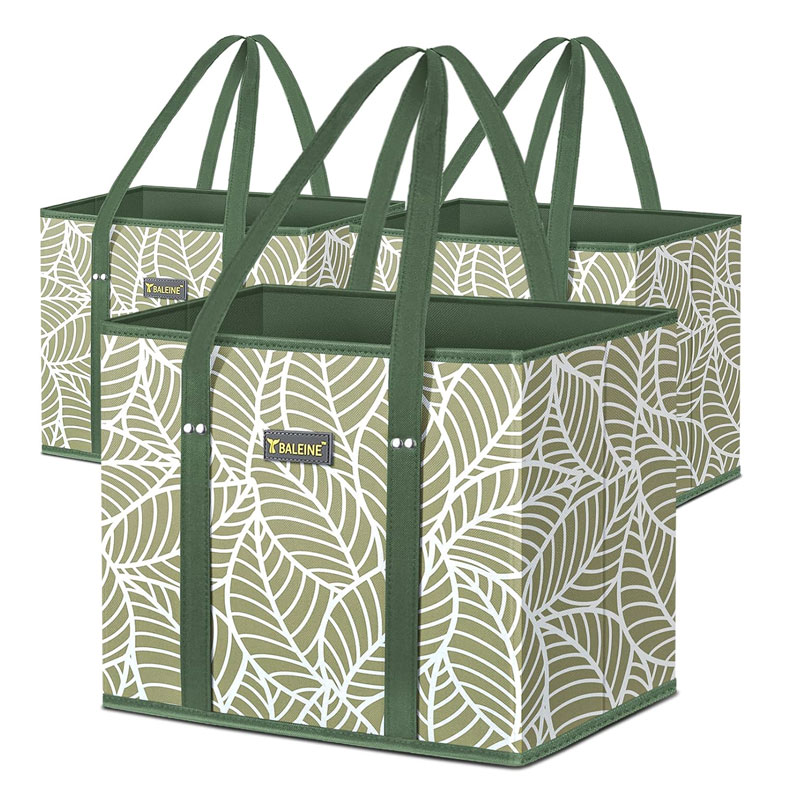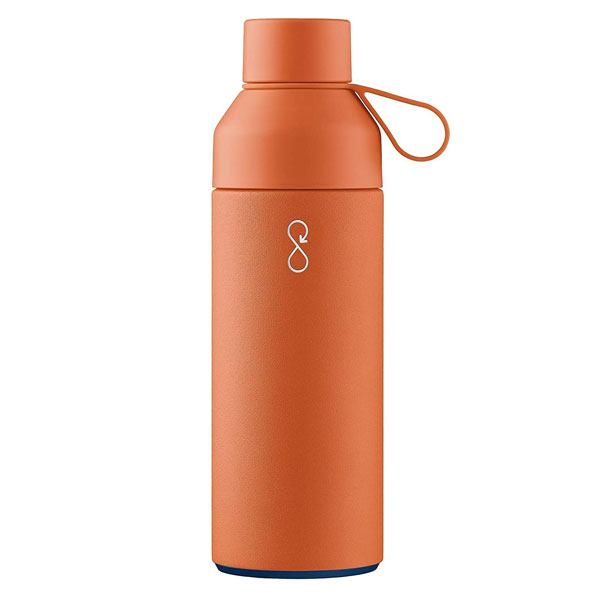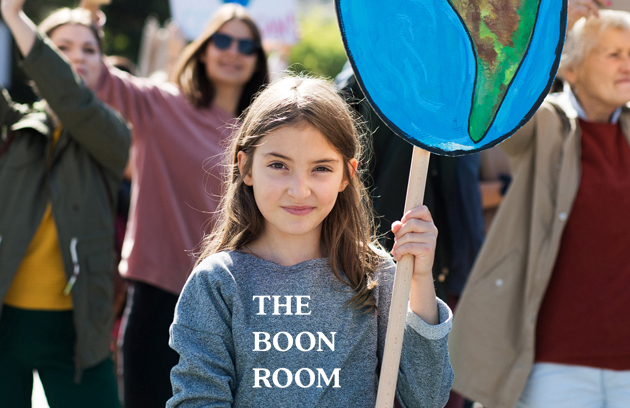In the face of climate change, pollution that endangers the health of people, animals, and plant life, and increasing habitat loss, action must be taken. However, while we’re often told it takes all of us to contribute to such an enormous undertaking as saving the planet – especially when it comes to decreasing our carbon footprint – it can be difficult to know where to start. Our best advice? Start small by focusing on how you can make your existence on this planet more sustainable.
What Are 20 Ways to Go Green?
We’re often asked, “What are good examples of sustainability ideas?” so we’d like to share some of our favorite sustainable products and sustainability tips to help you do your part. While your individual impact may be small, everyone can make a difference when working together. Here are twenty ways to start.
1. Switch to Reusable Paper Towels
Paper towels are a staple in many kitchens, but they aren’t reusable or recyclable. They can be composted, but many people simply throw them away so they can clutter landfills quickly. By contrast, reusable paper towels – thus named because they are more absorbent and flexible than regular kitchen towels – can be used, washed, and used again and again.
You can use them to do anything you would with a traditional paper towel, including cleaning up spills, drying your wet dishes, or cleaning up a dirty stove.
They’re also more cost-efficient than the alternative, as they can be reused a whopping 50 times before needing replacement – that adds up to nearly 90 rolls of traditional paper towels. When it’s time to replace them, the material is 100 percent biodegradable, so you won’t have to worry about them sitting in a landfill for years. If you want, you can compost them in just a few weeks.
2. Get Clean With Eco-Friendly Bar Soap
While soap is a necessity to remove surface dirt, get rid of germs, and improve your skin’s appearance, most are not sustainable or ethically sourced. While body washes are packed with shelf stabilizers, dyes, perfumes, and microplastics, bar soap is a better alternative. Better yet, this bar soap from The Right to Shower is even more sustainable than that of other companies.
Why? Its production doesn’t involve any animal testing, and the packaging is made from recycled materials. The company also sources all ingredients from sustainable origins.
3. Choose Reusable Straws
Plastic straws are single-use and contribute to landfill waste. Worse, they often find their way into waterways and pose a threat to wildlife. A metal straw can reduce waste in the landfill and help you cut costs. Instead of continuously purchasing new straws, a quality set of metal straws can last almost indefinitely.
4. Change to Reusable Coffee Pods
Many people like to enjoy a cup of coffee in the morning, and it can be extremely convenient to brew a single cup when you’re on the go. Unfortunately, single-use coffee pods, like those for a Keurig or Nespresso machine, are made of plastic that isn’t easily recyclable and poses a mounting plastic waste problem.
If you just can’t let the pods go, you can try participating in Nestle’s pod recycling program, but reusable pods are more sustainable. Other ways to help increase the sustainability of your morning coffee are to compost the used grounds or use them for fertilizer.
5. Try an Eco-Friendly Moisturizer
Moisturizer is one of the most essential personal care products for many people, but finding one made from sustainably sourced ingredients is not always easy. You’ll want to look for moisturizers like this one made from Fair-Trade-certified shea butter. This product also uses an aluminum tube instead of plastic, making it easy to recycle.
6. Prioritize Sustainably Produced Toys
Many modern toys are made from plastic and negatively impact the environment. Some companies have taken the opportunity to use recyclable materials in their toys instead of newly produced plastics. Look for recycled wood, metal, or even recycled “green” plastics like this line from Green Toys. They’re free from BPA, phthalates, and PVC, so they’re safe for your children and the environment, too.
7. Monitor Your Electricity Use
Americans are notorious for using far more electricity than they need and never considering the ramifications. Even if you are concerned about your electricity usage, it can be difficult to know where to cut back. While you can see your energy usage on your electric bill, you likely won’t get enough data to explain where most of your power consumption comes from.
8. Switch to Reusable Storage Bags
Storing leftovers is a great way to reduce your food budget and cut down on food waste. Unfortunately, finding the proper container to keep things like a half-used onion or a cucumber may have you reaching for a plastic storage bag that will ultimately wind up in the landfill.
Instead of single-use storage bags that aren’t biodegradable and can harm the environment, consider using a reusable bag.
9. Compost Your Food
While food is biodegradable, it serves no purpose wasting away in a landfill. By contrast, composting helps you to dispose of organic materials without contributing to the landfill and gives waste like banana peels or onion scraps a new life. You can use the compost as fertilizer for your garden to reduce erosion, encourage healthier growth, and conserve water.
10. Avoid Using Tea Bags
Tea is healthy, tasty, and, depending on the type you prefer, can provide energy, help you sleep, or serve as a lovely closing to a cool night. However, tea bags can pile up in the trash, which leads to more waste in the landfill. Instead of using a tea bag, consider purchasing a tea diffuser and using loose-leaf tea.
11. Try an Upcycling Project
Recycling has been a hot-button topic that many environmentalists have pointed to as a simple contribution anyone can make to help the environment. However, recycling can be more than taking glass bottles or newspapers to your local recycling plant, as there are many ways you can recycle to help the planet. Consider starting an upcycling project in your home where you reuse or repurpose some of your clutter into something fun. You could use empty wine bottles as a chandelier or turn your old books into planters. The only thing that limits you is your imagination.
12. Consider Sustainable Toilet Paper
Toilet paper is far from environmentally friendly. It’s often bleached, can’t be recycled, and can even harm your plumbing or septic system. Consider looking into more eco-friendly and sustainable options, such as this product made from 100 percent recycled products.
Instead of newly felled trees, recycled toilet paper is made from paper pulp that has already been used. This reduces the impact of the forestry industry on the environment. If you’re really committed to sustainable toilet products, try reusable toilet paper made from soft, absorbent cloth that can be washed and reused.
13. Teach Children About Sustainability
No one is born with an innate understanding of how to protect the environment. The fact that you’re here reading this blog is proof that sometimes, you need someone to show you the way. Teaching children about the importance of sustainability and environmental protection can instill these values in them at a young age. They can then carry this knowledge with them into the future to inspire future generations to take a hand in protecting the planet.
Sit with your children and explain the importance of doing simple things to help the environment, or offer to volunteer to speak at a school or youth group about a few things they can do to help protect the earth.
14. Switch to Reusable Food Wraps
Cling wrap is a useful tool in every kitchen that can fit any container and lightly cover leftover food for storage. However, these wraps are plastic and are not typically biodegradable. Worse, they can pose a serious risk to wildlife. For a more sustainable option in the kitchen, consider using a reusable food wrap from beeswax and cotton.
15. Try an Eco-Friendly Lipstick
Cosmetics are considered a significant source of waste and other damage to the environment. The products often come with extra packaging that leads to garbage in a landfill, and the cosmetics themselves may include ingredients that damage the environment or contribute to animal testing. Any time you can find an eco-friendly version of your favorite beauty product, we recommend you consider it.
16. Use Green Dish Soap
While you may not think of dish soap as something that contributes to environmental damage, it does have an impact on our planet. Many dish soaps can pose a threat to the environment when they enter the sewage system and, eventually, the waterways. They nearly always come in plastic containers that will sit for years in a landfill because they aren’t biodegradable.
17. Use Sustainable Floss
While floss picks or loose dental floss are small in comparison to some of the plastic products we throw away with daily use, these tiny products add up quickly. Instead of using single-use models, try a heftier, sustainable version you can reuse. Even if you don’t like the idea of using the same floss pick twice, this product is completely biodegradable, uses zero plastic, and requires less material to produce.
18. Give Organic and Sustainable Gifts
One of the biggest crises facing the planet is our reliance on plastics. Organic products made from the earth using natural materials are often better for the planet in the long run than relying on plastic items. Look for products made from abundant resources like cotton, bamboo, or hemp, and consider giving these sustainable options to your friends and family as gifts to help spread good habits to those closest to you.
19. Swap Out Your Single-Use Grocery Bags
Plastic bags have been a point of contention with many environmentalists, and some grocery stores are beginning to phase them out. You can help bring about the end of plastic bags by purchasing several reusable grocery bags you can fill again and again. Look for bags made from recycled material to increase the contribution to the health of the planet. With the right care, you can reuse your bags for years.
20. Use a Recycled Water Bottle
Single-use plastic water bottles are currently piling up in landfills around the world and greatly contribute to our environmental problems. Instead of buying a case of water bottles to take with you on the go, consider purchasing a reusable water bottle that you can use whether you’re out or about or just sipping on water at home. To further positively impact the environment, try to find a bottle made of recycled materials like this one.
Let’s Continue to Work Together for Better Sustainability
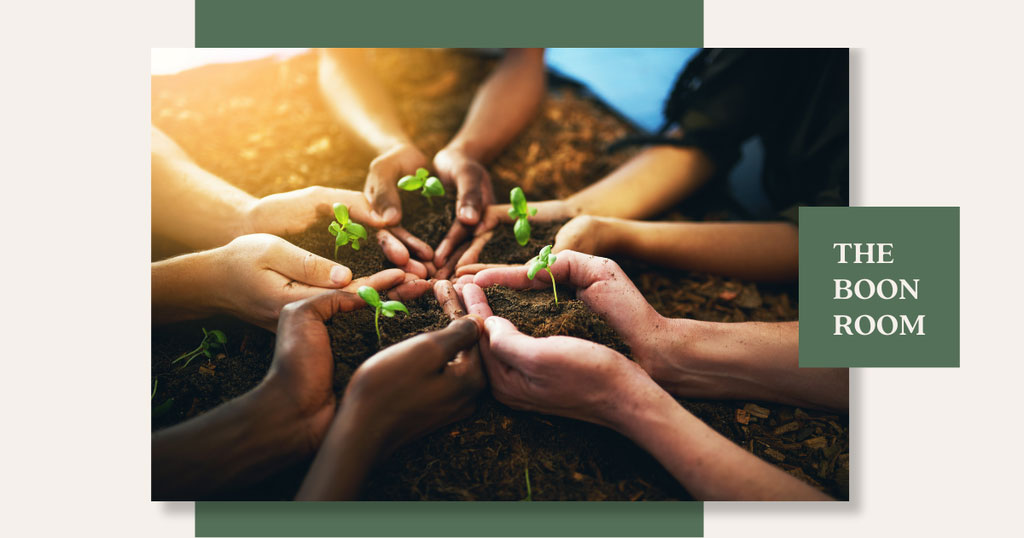
There you have it: our top twenty ideas to help reduce your carbon footprint and protect the planet. Once you’ve made these simple changes, consider learning more about eco-friendly products and how you and your family can live a more sustainable lifestyle.
Keep reading our blog and be sure to subscribe to The Boon Room newsletter for regular updates and sustainability news.
Jenny Weatherall is the co-owner and CEO of Eminent SEO, a design and marketing agency founded in 2009. She has worked in the industry since 2005, when she fell in love with digital marketing… and her now husband and partner, Chris. Together they have 6 children and 3 granddaughters.
Jenny has a passion for learning and sharing what she learns. She has researched, written and published hundreds of articles on a wide variety of topics, including: SEO, design, marketing, ethics, business management, sustainability, inclusion, behavioral health, wellness and work-life balance.
